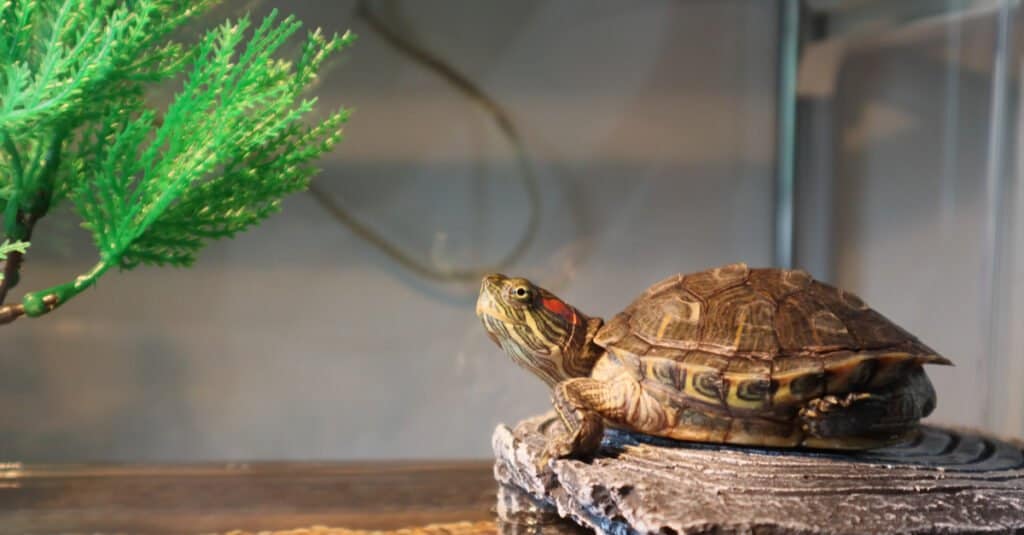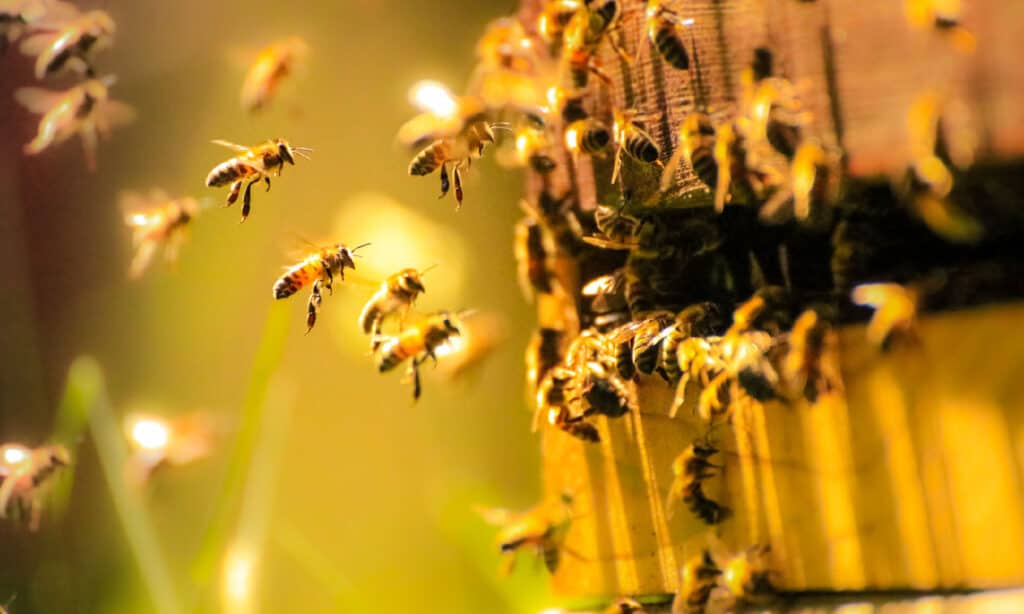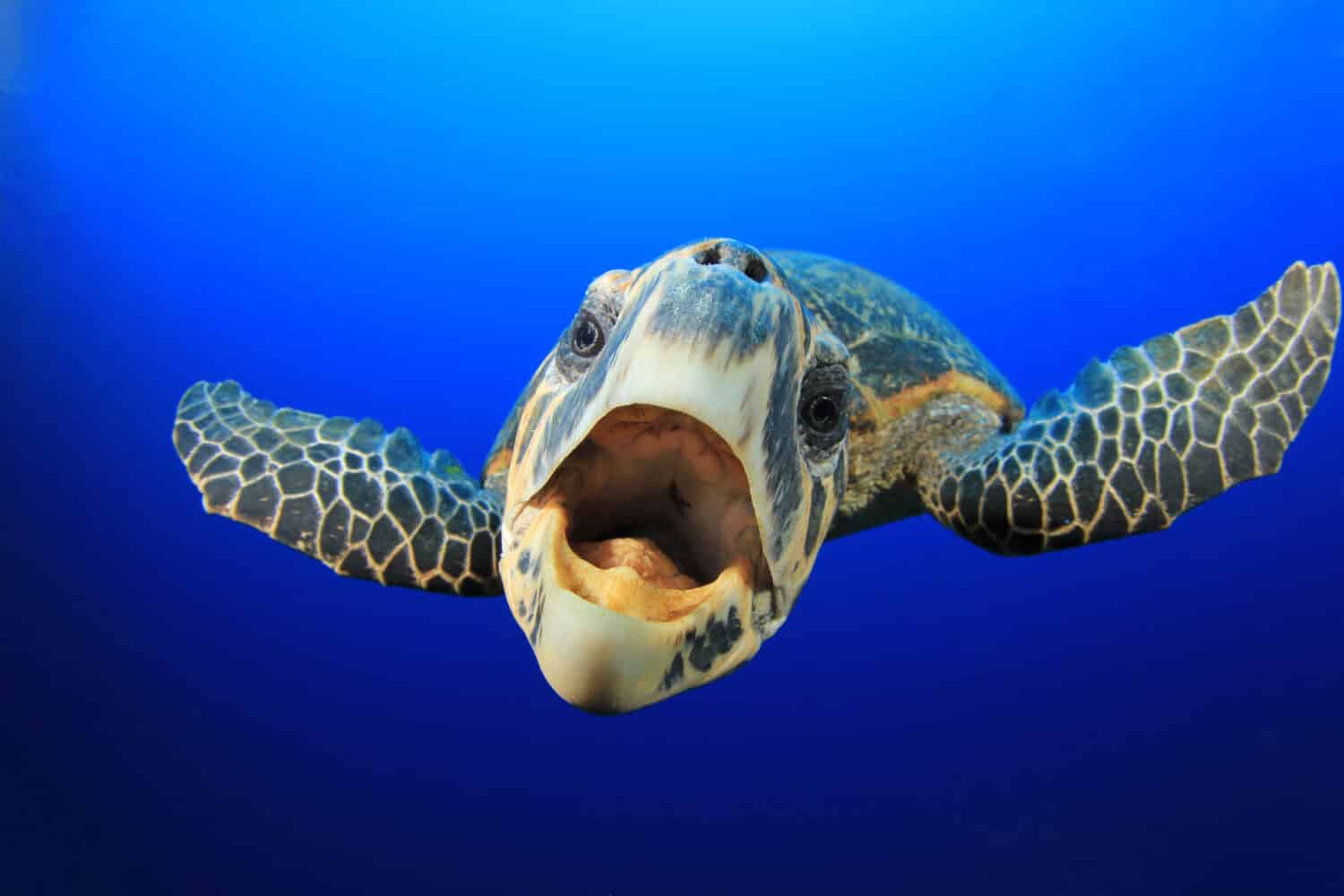How smart are turtles? Everything we know about their intelligence is discussed in this article.
Turtles are much different than humans. They spend a lot of time in the water, they do not have vocal cords, and most don’t move very fast. However, they’re still capable of things that humans can only dream about.
Summary of a Turtle’s Mental Abilities

Sea turtles navigate huge distances to lay their eggs.
©Attila N/Shutterstock.com
A turtle doesn’t think like a human does, but that doesn’t mean that they don’t have honed mental abilities worth admiration. There are a lot of factors that go into determining how smart turtles are, but everything we know about their intelligence helps us better understand these animals.
Turtles can remember other turtles that they interact with frequently. A large swath of sea turtles are also capable of navigating huge distances to lay eggs on the same beaches on which they hatched.
These sea turtles have a mental ability that humans do not possess. They’re able to sense the planet’s electromagnetism which allows them to map their surroundings virtually without having to optically process information.
Even smaller freshwater turtles like common box turtles (Terrapene carolina) are capable of navigating much farther distances than expected. Most common box turtles live their entire lives in a space a bit smaller than a football field. However, if they’re removed from their environment, they can find their way home at distances up to 5 miles.
Cognitive Capabilities: Understanding a Turtle’s Problem-Solving Skills
Most animals that survive in the wild have some cognitive capabilities. However, the extent of a turtle’s problem-solving skills varies by species. Even so, all turtles possess some ability to solve problems as they interact with their habitats.
All turtles can tell the difference between black and white, and most see much better in the dark than humans. Almost all turtles see in color, and some species see more color than detected by people.
Some turtles inherited a gene passed down from dinosaurs that allows them to see a much larger red spectrum than what is perceived by humans. This ability to perceive nuances in color allows turtles to differentiate between different things in their environment. This means that they can differentiate food items and obstacles underwater or in the dark in a way that people cannot.
Turtles distinguish objects in their environment by shape. Smaller turtles do this through visualization while larger sea turtles do this through an extremely complex process that involves building 3 dimensional maps in their heads. However, even turtles with the ability to sense electromagnetism are still able to migrate great distances only by sight and smell if necessary.
Cognitive Capabilities: Understanding a Turtle’s Learning Aptitude

Turtles are hard to train but it isn’t impossible.
©Mark Leung/Shutterstock.com
Turtles do not learn quickly and they need lots of repetition to develop a skill. Most people, outside of zookeepers, don’t bother training their turtles because it’s a huge time investment. Despite this, it is possible to train a turtle if you’re patient enough.
Turtles can learn to come when called. Eventually, they can be taught to navigate a rudimentary obstacle course. Some turtle owners are even able to potty train their pets.
Most turtle training is done through target training. This is the use of a big colorful object to signal to the turtle that you want them to perform a certain behavior. Coming to the target by reinforcing the behavior with food is how most training regiments start.
Intelligence and Migration in the Animal Kingdom: Comparing Turtles to Other Species
Everything we know about a turtle’s intelligence and how smart they are is much different than what we know about people. However, their ability to navigate through their environment is far superior to that of humans.
Other animals that aren’t turtles also participate in long migrations. Some do this in a manner that’s similar to turtles, while others take a wildly different approach. We’ll look at a few animals now and compare their migration ability with turtles.
Turtle Intelligence vs Everything We Know About Monarch Butterflies

Monarch butterflies migrate huge distances but for a different reason than sea turtles.
©David Trevarthen/Shutterstock.com
Most sea turtles, like loggerheads (Caretta caretta) migrate exceptionally long distances every few years to lay eggs on the beaches that they hatched on. Monarch butterflies (Danaus plexippus) also migrate thousands of miles every year. However, the reason they migrate is different.
Turtles migrate to lay eggs or to mate. In contrast, monarch butterflies migrate with the change of the seasons. This seasonal migration in monarchs is called overwintering.
Monarchs most likely use the sun and electromagnetism to navigate during their migration. Freshwater turtles also use the sun to navigate, and they use familiarity with their environment or celestial clues to orient themselves. Sea turtles rely on electromagnetism along with sight and smell to direct them on their journeys lasting thousands of miles.
Magnetite Crystals and Turtle Intelligence: Loggerheads, Homing Pigeons, and Honey Bees

Honey bees and turtles have magnetite crystals in their brains.
©iStock.com/William Jones-Warner
Loggerheads, homing pigeons, and honey bees have magnetite crystals in their brains that detect the Earth’s electromagnetism. These crystals are 100 thousand times more sensitive than the best human compasses. The monarchs mentioned previously may also contain magnetite crystals in their anatomy, though this is less confirmed than with the other animals mentioned.
Exactly how these crystals function is unknown, but their presence in animals like honey bees, homing pigeons, and loggerheads is the reason that these animals successfully navigate large distances. Magnetite crystals act as permanent magnets that probably send stimuli to nerves that an animal can interpret into directional information.
Past Discoveries and Studies on a Turtle’s Intelligence
A lot of the understanding around turtles has developed anecdotally throughout human history. Despite this, scientific studies provide precise information about the mechanisms of intelligence in some turtle species. We’ll review a few examples now.
Painted Turtles: A Study on Differentiation and Intelligence
Over 100 years ago, an experiment was conducted on painted turtles (Chrysemys picta). These are smaller turtles that are common across North America. This was done to show how smart turtles are by trying to get to the bottom of everything we can know about their intelligence.
The turtles in this study were able to differentiate shapes and identify different line patterns. They were also able to tell the difference between white and black, though we now know they can see a huge array of colors.
By doing 10 trials per day for up to 6 months per turtle, it was shown that turtles are slow learners with big differences in individual capabilities. It was also demonstrated that each turtle has a markedly different personality than the next which affects any generalizations about their intelligence as a whole.
Coastal Plain Cooters: A Study on Learning Through Reinforcement

An experiment on coastal plain cooters showed turtles respond to positive reinforcement.
©iStock.com/Sunshower Shots
In a study conducted in the 1980s, it was shown that coastal plain cooters (Pseudemys floridana) respond better to positive reinforcement than negative reinforcement. The punished turtles became upset and hid. They also did not recover quickly which negatively affected the experiment as a whole.
Olive Ridley Sea Turtles: A Study on Magnetism Providing Intelligence
In the early 2000s, a scientist named Jack Rudloe found a dead olive ridley sea turtle (Lepidochelys olivacea) hatchling in Costa Rica. He brought it to his lab where he demonstrated that a strong magnet attracted the turtle’s head to it. Rudloe did this to demonstrate the mechanisms that contribute to how smart turtles are by enhancing our understanding of everything we know about their intelligence.
He was able to use a magnet to spin the turtle and orient the turtle’s body based on the position of its head relative to the magnet. This study demonstrates the importance of magnetite crystals in the brains of sea turtles when considering their navigational abilities.
Thank you for reading! Have some feedback for us? Contact the AZ Animals editorial team.








